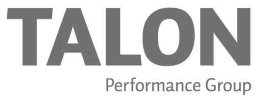We live in a time of change. Among the most visible changes are globalization, technological advancement and multigenerational workplaces. Similarly, the nature of leadership is also changing. The best new leaders develop and implement the emotional intelligence characteristics of agility, creativity, community and contribution.
In the legal profession, specifically, change is also prevalent: firm mergers are commonplace, lateral movement is at a record high, the lock-step partnership track is being replaced by competency models, and more firms and companies rely on staff attorneys and project attorneys. In this time of change, a key predictor of a good lawyer is emotional intelligence (see, e.g., The Prediction of Professional Effectiveness, Schultz and Zedeck,) versus the GPA. A well-developed emotional intelligence allows a lawyer to more effectively serve clients and more easily adapt to this era’s changes.
The fact that studies have now proven success predictors are linked to emotional intelligence (EQ) versus intellectual intelligence (IQ) is exciting. EQ is something that can be improved and developed. Broadly defined,EQ addresses the emotional, personal, social and survival dimensions of intelligence. For daily functioning, EQ is as important, if not more important, than the traditional cognitive aspects of intelligence. Emotional intelligence is concerned with understanding oneself and others, relating to people and adapting to and coping with your immediate surroundings. Emotional Intelligence is an accurate predictor of success because it reflects how a person applies knowledge to the immediate situation. In a sense, measuring emotional intelligence is similar to measuring common sense– the ability to get along in the world. It is not that IQ is no longer important. Rather IQ with EQ can make you a better lawyer, a stronger leader, give you greater career satisfaction and provide better relationships throughout your life.
Specifically, how is EQ relevant to a lawyer? Knowledge is power. If you are tuned to the emotional, personal, and social ramifications of a situation, you can make better decisions and have greater influence. Similarly, a well-developed EQ improves one’s decision-making while under stress. As a general rule, high stress leads to less effective cognitive function and more irrational decisions. Conversely, a well-developed EQ allows a person to be aware of and tolerate increasing stress levels, and the effects of stress, both on themselves and others. An acute EQ under pressure will increase one’s ability to stay rational, improving access to one’s cognitive thinking (IQ), allowing for better decision making.
It is a certainty that your most successful colleagues rely on emotional intelligence to make decisions, problem solve and strengthen client relationships. Here is a practical three-step process to use EQ to increase your success in developing client relationships.
STEP 1. KNOW YOURSELF.
When asked, “What do you do?” most lawyers simply describe (sometimes in great detail) their practice area. But what the person asking this question (client, prospect, potential hire or board member) really wants to know is “Who are you?” However, you cannot tell people who you are if you haven’t answered this question for yourself first. Clarifying your response to this question is simple, but not easy. It takes understanding yourself, brainstorming, testing with others, practicing, honing the message and then perfecting the answer. You will know you have your answer when it is both genuine for you and the response of the listener will be a follow-up question to know more.
STEP 2. YOUR UNIQUENESS.
You must be able to describe yourself and your work clearly and concisely. One exercise that may help this process is to consider what three adjectives best describe you and the experience you give clients. The combination of these three adjectives is what makes you unique in the market. This combination of three adjectives also determines why people work with you and which people work best with you. In knowing how to describe yourself, you help people decide whether they want to engage you further and you help yourself determine how, with whom and where to spend your time. Keep in mind that most people don’t really want to hear about how you do what you do. People do want to know, “What can you do for me?” They want to hear about what you have done for others like them. So when asked “What do you do?” be ready to state how you solve problems, fix issues or save the client time or money.
STEP 3. PERSUADE THE CLIENT.
Potential clients, like all people, love a good story. If you want to effectively persuade a potential client to hire you, tell the potential client a good story that is relevant to their issues.
1) Explain how you effectively worked with a similar client.
2) Describe your past successes solving similar problems.
3) Briefly tell the potential client about how you solve those problems. And, above all, the potential client must know how you will make him or her sleep better at night.
Finally, you must take the initiative to move the relationship with the potential client forward. Take action — suggest a next step at a particular time and place. Do not leave the next steps open ended and vague. Don’t wait for the potential client to take the next step. Giving someone direction with time and dates actually triggers a positive comfort response in the brain. Suggested action with a date and time indicates confidence, clarity and accountability. No one seeks out mediocrity. Clients seek solutions. People work with attorneys who instill confidence and trust. Whether you are in private practice or an in-house legal department, a key factor in success is the ability to develop and build effective relationships. Whether one is developing new business, presenting to a board, advancing a career, interviewing, or leading a productive team – one’s success in all of these activities boils down to effective communication, aka interpersonal skills, aka one’s emotional intelligence.
